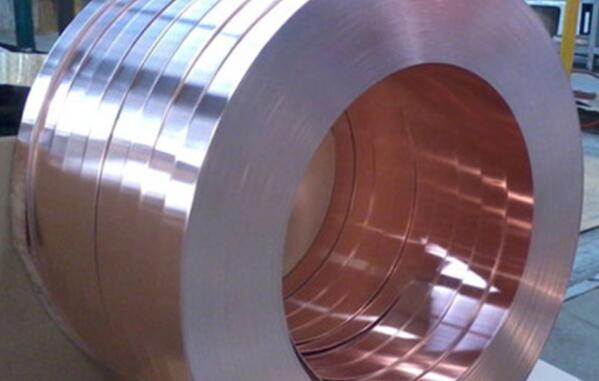It is well known that copper and steel (iron) are two different metals. Copper has a thermal conductivity 7-11 times greater than ordinary carbon steel and is difficult to reach melting temperature. When copper melts, its surface tension is 1/3 smaller than iron and its fluidity is 1-1.5 times greater than iron. Iron and copper are infinitely soluble in the liquid state, finite in the solid state, and do not form intermetallic compounds. For the solid solution of iron and copper, the solubility of iron in copper at 650°C is only 0.2%, while the solubility of copper at 1094°C is only 4%. In addition, the coefficient of linear expansion of copper is about 40% larger than that of iron. The crystallization temperature range of iron-copper alloys is around 300-400°C. It is also easy to form (Cu+Cu2O), (Fe+FeS), (Ni+Ni3S2) and another low melting point eutectic. Liquid copper or copper alloys are highly permeable to the grain boundaries of the steel near the cracked area. The properties of copper determine the welding of steel and copper is often more difficult.

1. welding heat cracks.
2. Intergranular penetration and penetration cracking.
This usually occurs in the steel side of the matrix near the weld area. Data show that the addition of elements such as Mn, Ti and V to copper alloys or welds containing Ni, Al and Si can effectively reduce the tendency to deep melt cracking. For example, when the content of Ni is higher than 16% (mass fraction), it does not produce deep melt cracking, while for tin-containing bronze will produce severe deep melt. In addition, the microstructure of the steel also has an impact, such as liquid copper can penetrate into austenite but not into ferrite, so single-phase austenitic steel is prone to penetration cracking, while austenitic-ferritic dual-phase steel is not.
3. The weld overcast
It is generally believed that the overcast in the weld is caused by the high Fe content in the weld. When the infinite solid solution of liquid metal from high temperature solidification to solid, the solubility of Fe greatly reduced, the formation of Yin melt in the weld, will affect the performance of the weld.
However, because steel and copper have similar lattice types, lattice constants and atomic radii at high temperatures, special welding techniques allow them to be welded together. It is generally accepted that at 0.2%-1.1% Fe content in the weld, the weld is organized as a large alpha phase with poor crack resistance. With the increase of Fe content, the weld is α + ε duplex organization with the best crack resistance, especially when the Fe mass fraction is 10%-43%. Do you know how to weld stainless steel and copper?
Manual arc welding, argon arc welding and gas shielded welding can weld steel and copper and their alloys. It is recommended to use pure nickel or a nickel-based alloy containing copper to deposit the transition layer because of the high resistance to cracking of nickel-based welds. The element nickel can greatly reduce or eliminate penetration of copper and copper alloys into the steel and help eliminate penetration cracks in the heat affected zone. This experiment is based on pure copper 300mm x 150mm x 5mm C11700 copper plate and A 106 steel as an example. After cladding the transition layer, silicon manganese bronze wire 201 and wire 202 can be used as filler metal materials to enhance the melt pool deoxidation.
Step 1. Clean and polish the oxide film and oil stains on the surface of the copper and steel metal base material, and then process the copper edge groove to 40° on one side with a surface roughness Ra of 0.8m~1.0m.
Step 2. Copper and steel metal base material is heated in a chamber furnace. The heating temperature is 400℃~500℃, and the insulation is 30min~45min.
Step 3. Copper plate and carbon steel plate base material are fixed by spot welding with S201 purple copper wire filled by tungsten argon arc welding (TIG). Then the copper plate is joined by fusion welding and brazing, and the arc is transferred to the base material on the copper side (the arc deviation is 10°~25°). Parameters: Current 140A ~ 160A, voltage 8V ~ 10V, shielding gas He ~ Ar mixture, gas flow rate 15L/min; volume ratio of He to Ar in the He ~ Ar mixture is 8:2.
Step 4. Clean the weld with a wire brush until there is a metallic luster and the welding is complete.
This copper-steel welding method uses He~Ar high-energy shielding gas concentrated line energy, which can shorten the residence time of high temperature in the molten pool, prevent excessive melting of the substrate, so that copper and steel completely mixed, diffusion and increase the copper content at the interface, resulting in continuous penetration of the steel surface, the formation of low melting point eutectic thermal cracking.
At the same time, the high-energy shielding gas He ~ Ar mixture can also inhibit the combination of oxygen and copper, thereby inhibiting the formation of oxide particles at the copper interface and preventing the formation of cracks. In addition, during the welding process, the arc is tilted toward the copper side to ensure that the steel side is not melted, forming a fused and brazed joint to avoid excessive infiltration of molten copper into the steel side and the formation to reduce the heat-affected zone of high-temperature action time and improve the plasticity and toughness of the welded joint.